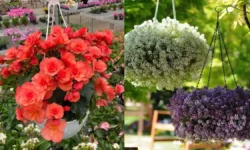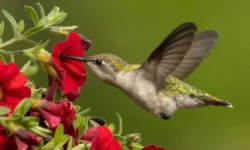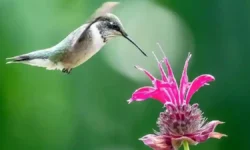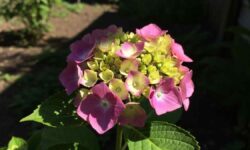Growing cucumbers from seeds indoors is a rewarding way to ensure an early and abundant harvest. By starting cucumber seeds inside before transplanting them outdoors, gardeners can give their plants a head start on the growing season, avoid late frosts, and maximize overall yield. However, timing is crucial. Knowing exactly when to start cucumber seeds indoors and how to care for seedlings properly directly impacts plant vigor and fruit production.
Cucumbers are warm-season vegetables sensitive to cold soil and frost. They require a long growing season and plenty of warmth to thrive. Starting seeds indoors allows control over early growth conditions, giving cucumbers the best chance to flourish once transplanted. In this article, we will explore the ideal timing to start cucumber seeds indoors, factors that influence germination and growth, and essential tips for nurturing seedlings to maximize yield.
Table of Contents
Understanding the Benefits of Starting Cucumber Seeds Indoors
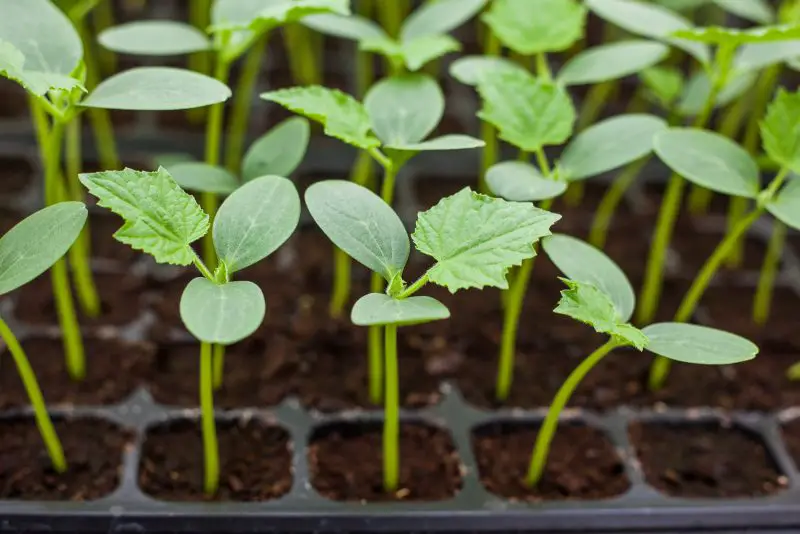
Why Start Seeds Indoors Instead of Direct Sowing?
Direct sowing cucumber seeds outdoors is common and often successful in warm climates. However, starting seeds indoors offers distinct advantages. It extends the growing season by several weeks, allowing cucumbers to mature earlier and produce more fruit before the end of the season.
Indoor starting also shields young seedlings from unpredictable outdoor weather, pests, and diseases that could stunt early growth or destroy fragile plants. Controlled conditions such as temperature, moisture, and light can be optimized for faster germination and stronger seedlings.
Additionally, gardeners can select and plant only healthy seedlings, improving overall garden success.
How Starting Seeds Indoors Maximizes Yield
By starting cucumber seeds indoors at the right time, plants have a head start when moved outdoors, developing robust root systems and foliage before facing outdoor stresses. Early transplanting leads to earlier flowering and fruiting, which translates into higher total yield.
Furthermore, healthy transplants are less vulnerable to pests and diseases, reducing losses and increasing productive vines.
When Is the Best Time to Start Cucumber Seeds Indoors?
Considering Your Local Climate and Last Frost Date
The ideal time to start cucumber seeds indoors depends primarily on your local climate and the average last frost date in spring. Cucumbers are highly sensitive to frost; even a light frost can kill young plants.
Generally, cucumber seeds should be started indoors about 3 to 4 weeks before the last expected frost date. This timing gives seedlings enough time to grow and harden off before transplanting into the garden.
For example, if the last frost date is April 15, begin sowing cucumber seeds indoors around March 15 to March 22.
The Risk of Starting Too Early or Too Late
Starting cucumber seeds too early indoors can lead to leggy, weak seedlings due to insufficient light or excessive time in pots. These plants may struggle to establish when transplanted outside.
Conversely, starting seeds too late reduces the growing season, potentially limiting fruit production before temperatures drop in fall.
Balancing timing with indoor conditions and outdoor readiness is essential for maximizing yield.
Adjusting Timing for Different Growing Zones
Gardeners in warmer USDA zones with longer growing seasons might start cucumber seeds indoors earlier or even sow directly outdoors.
In cooler zones with short seasons, starting seeds indoors at the right time becomes more critical to ensure cucumbers have enough time to mature.
Checking local gardening guides or extension service recommendations helps determine appropriate timing.
Preparing for Indoor Seed Starting
Choosing Quality Cucumber Seeds
Selecting high-quality, disease-resistant cucumber seed varieties suited to your climate sets the foundation for success. Consider types such as slicing cucumbers, pickling cucumbers, or compact bush varieties depending on your space and preferences.
Fresh seeds with good germination rates improve indoor starting outcomes.
Selecting the Right Containers and Growing Medium
Seed trays, peat pots, or small containers with drainage holes are suitable for indoor seed starting. The growing medium should be light, well-draining, and sterile to prevent damping-off diseases.
A seed-starting mix formulated for optimal moisture retention and aeration works best.
Providing Adequate Light and Temperature Conditions
Cucumber seeds require warmth to germinate, ideally soil temperatures between 70°F and 95°F (21°C–35°C). Using a heat mat can help maintain consistent warmth.
Once germinated, seedlings need at least 12 to 16 hours of bright light daily. Placing seedlings near a sunny window or using grow lights prevents legginess and promotes sturdy growth.
Maintaining moderate humidity and good air circulation supports healthy seedlings.
Caring for Cucumber Seedlings Indoors
Watering and Moisture Management
Consistent moisture is vital, but overwatering can cause root rot or fungal issues. The soil should be kept moist but not soggy. Mist seedlings lightly or water from the bottom to avoid disturbing fragile stems.
Checking moisture daily helps maintain optimal hydration.
Thinning Seedlings
Once seedlings develop their first true leaves, thinning to one healthy seedling per container prevents overcrowding and competition for nutrients.
Transplanting weaker seedlings to separate containers if desired can salvage more plants.
Fertilizing Seedlings
After two weeks, feeding seedlings with a diluted, balanced fertilizer supports robust growth. Avoid excessive nitrogen, which can promote leafy growth at the expense of root development.
Following recommended feeding schedules ensures seedlings are well-nourished for transplanting.
Hardening Off Seedlings Before Transplanting
Gradually acclimating seedlings to outdoor conditions reduces transplant shock. Start by placing seedlings outside in sheltered, shaded areas for a few hours daily, increasing exposure to sunlight, wind, and temperature fluctuations over 7 to 10 days.
Hardening off strengthens seedlings, preparing them for successful establishment in the garden.
Transplanting Seedlings Outdoors
Choosing the Right Time to Transplant
Seedlings should be transplanted outdoors only after all danger of frost has passed and soil temperatures reach at least 60°F (16°C). Transplanting too early exposes plants to cold stress, hindering growth or causing death.
Checking soil temperature with a thermometer helps determine the best planting time.
Preparing the Garden Bed
The planting site should have well-draining soil enriched with organic matter. Amending soil with compost improves fertility and moisture retention.
Spacing cucumber plants adequately allows good air circulation and reduces disease risk.
Transplanting Techniques
Handle seedlings carefully by the leaves or root ball to avoid damaging stems. Plant seedlings at the same depth they grew indoors.
Water thoroughly after transplanting to settle soil around roots.
Providing support such as trellises benefits vining cucumber varieties by saving space and improving air flow.
Maximizing Yield Throughout the Growing Season
Consistent Watering and Mulching
Cucumbers require regular watering to produce tender fruits. Mulching around plants conserves soil moisture, regulates temperature, and suppresses weeds.
Avoid overhead watering to reduce fungal disease incidence.
Fertilization During Growth
Side-dressing with nitrogen-rich fertilizer after the first fruits appear encourages continued flowering and fruiting.
Monitoring plant health guides fertilization adjustments.
Pest and Disease Management
Regularly inspecting plants for pests like cucumber beetles or aphids prevents infestations. Early intervention with organic or chemical controls protects crop yield.
Practicing crop rotation and removing diseased plant debris reduce disease pressure.
Supporting Plants Properly
Using cages or trellises supports healthy growth, reduces fruit rot, and makes harvesting easier.
Training vines keeps plants tidy and optimizes space.
Common Mistakes to Avoid When Starting Cucumber Seeds Indoors
Starting Seeds Too Early or Late
Improper timing can cause weak plants or shortened growing seasons. Align seed starting with local climate and last frost dates.
Insufficient Light Leading to Leggy Seedlings
Lack of strong light causes tall, spindly seedlings. Supplement natural light with grow lights if needed.
Overwatering or Underwatering
Both extremes stress seedlings and reduce survival rates. Monitor moisture carefully.
Neglecting Hardening Off Process
Skipping hardening off causes transplant shock and poor establishment.
FAQs About Starting Cucumber Seeds Indoors
When is the best time to start cucumber seeds indoors?
The best time to start cucumber seeds indoors is about 3 to 4 weeks before your local last frost date, allowing seedlings to be ready for transplanting after frost risk passes.
How long does it take for cucumber seeds to germinate indoors?
Cucumber seeds usually germinate within 7 to 10 days when kept in warm soil (70°F to 95°F), with consistent moisture and adequate light.
How do I prevent my cucumber seedlings from becoming leggy?
To prevent legginess, provide at least 12 to 16 hours of bright light daily using grow lights or a sunny window, and avoid starting seeds too early indoors.
When should I transplant cucumber seedlings outdoors?
Transplant seedlings outdoors once the soil temperature reaches at least 60°F (16°C) and there is no risk of frost. Hardening off seedlings beforehand is essential.
What care do cucumber seedlings need after transplanting?
After transplanting, provide consistent watering, support with trellises, proper fertilization, and monitor for pests and diseases to maximize yield.
Conclusion
Starting cucumber seeds indoors at the right time is a crucial step to maximizing yield. By considering local climate, choosing quality seeds, providing ideal germination conditions, and caring for seedlings properly, gardeners set their cucumbers up for success.
When transplanted outdoors at the optimal moment, strong seedlings mature faster and produce more abundant fruit. Throughout the season, attentive care involving watering, fertilization, pest management, and plant support further enhances productivity.
With proper indoor seed starting and subsequent garden care, you can enjoy a bountiful cucumber harvest year after year, regardless of your growing zone.



